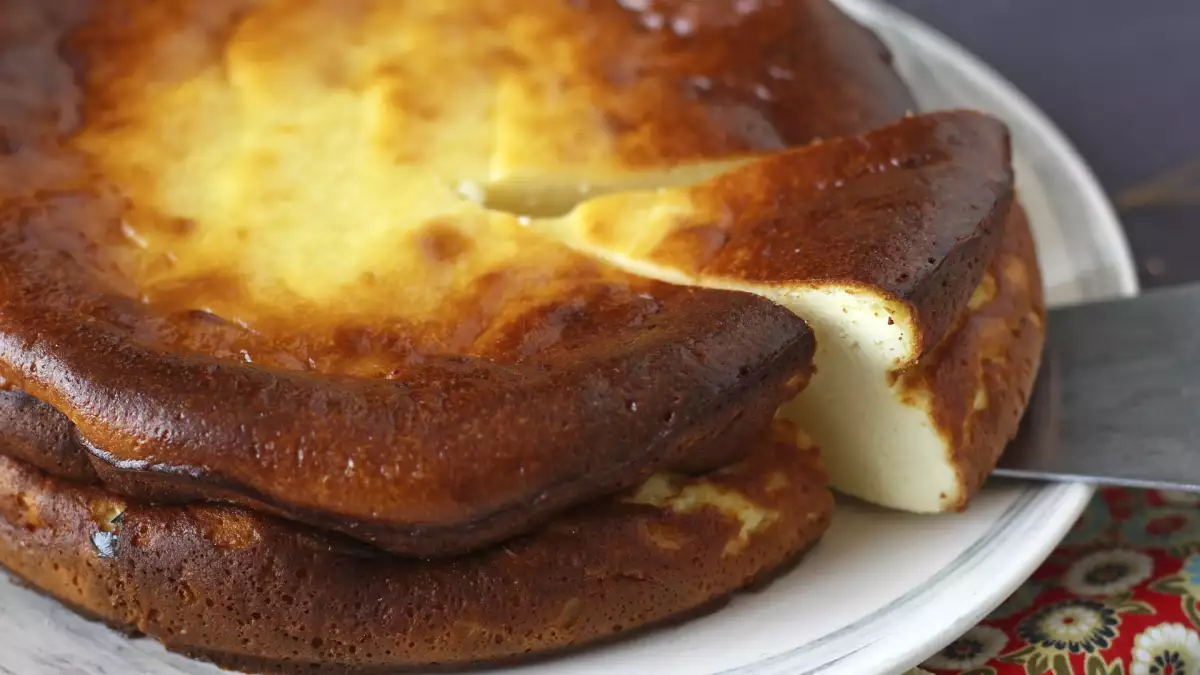Cheesecake gone wrong? Before you give up, check if you’re making one of these 7 classic errors

Making a cheesecake seems simple until you try it. What starts out as a mixture of cheese, sugar and eggs becomes, without knowing how, a battle between science and patience. Sometimes the center sinks, sometimes it cracks just when you thought everything was going well, and suddenly you discover that the base has softened while you were already thinking about which dish would be the most attractive. There's no mystery: cheesecake is honest to a fault. It gives you back exactly what you give it, and it doesn't forgive haste or carelessness. Maybe that's why it's so obsessive. Because achieving perfection in something so simple demands attention and care to every detail. That is why understanding its whims, the temperature, the air, the rest... is the first step to taming it.
Ingredients of insufficient quality
Don't skimp on the cheese, cream or fat. "Light" versions almost always betray texture. A creamy but stable cheese, a full-bodied cream and, if necessary, a small amount of starch (like cornstarch) can make the difference between a good cake and a memorable one.
Cold cheese
One of the most common mistakes is to use cheese directly from the refrigerator. The low temperature prevents it from mixing well with the sugar and eggs, resulting in lumps or a heavy batter. The solution is simple: take the cheese and dairy products out in advance to allow them to cool, or heat them slightly in a bain-marie until they are soft. This way you will avoid complications from the start.
Poorly compacted cookie base (if present)
If you make a cookie base version, do not improvise. Crush the cookies without leaving large pieces, mix them with butter at room temperature and press them well into the bottom of the mold. Let the base cool in the refrigerator before pouring the filling. Otherwise, the moisture from the filling will soften it and cause it to leak or sink.
Over (or under) whipping
Many novice cooks believe that the more air, the better. But cheesecake is not a sponge cake: too much air causes cracks, sinking and internal bubbles. The key is to beat at low or medium speed, integrating the ingredients with enveloping movements when necessary. Don't look for volume, look for homogeneity.
Failure to respect thermal stability
Peering into the oven "just for a second" is an almost inevitable reflex, but also a mistake. Each opening causes a sudden drop in temperature and humidity that interrupts the baking process: the air contracts, the steam condenses and the center, still fragile, sinks. The result is cracks or a deformed cake. The only solution is patience: keep the oven closed until the end and rely on constant heat.
Cooling too early
Another fatal mistake is to rush to cool the cake. Taking it out of the oven and taking it immediately into the cold causes a thermal shock: the edges, still hot, contract and pull towards the center, opening cracks or leaving a sunken surface. Ideally, leave it in the oven turned off, with the door ajar, for a few minutes so that the temperature drops gradually. Then let it rest at room temperature on a rack until it is completely cool. Only then should it go into the refrigerator, where it will finish setting and acquire its creamy and stable texture.
Unmold too early
Impatience also takes its toll. A cheesecake needs to rest and stabilize before unmolding. If it is made while it is still warm or hot, it can break or become deformed. It is best to wait until it is very cold and firm, ideally after an overnight rest in the refrigerator, before carefully removing it from the mold.
Freezing a homemade cheesecake
Freezing a homemade cheesecake seems like a good idea, but it almost always spoils it. It can be done, but it is not optimal. Without stabilizers and deep-freezing, dairy products and eggs do not tolerate intense cold: ice crystals form that break the structure and, when thawed, release water. The result is a grainy, less creamy texture and a moist base. At home, it is wise to keep the cake in the refrigerator, tightly covered, for three or four days. The freezer does not preserve it: it only robs it of its texture.
Not everything simple is simple
In the end, making a cheesecake is an exercise in humility. You think you have it all under control until you find yourself with a sunken cake. But that's exactly where you learn: in every crack, in every base that softens, in every center that sinks a little too much. We've all been there. Have any of these mistakes happened to you? Maybe this time, with a little more patience and some of these tips, your next cheesecake will be just the one you want.
Comments